Yugoslav socialism, the Non-Aligned Movement and the Global South
Learn how Yugoslavia forged a unique path between East and West.
20 October 2025Learn how Yugoslavia forged a unique path between East and West.
20 October 2025Blog series: European Studies blog
Authors: Savka Andic, Slavonic Acquisition and Cataloguing, Special Collections Metadata and Milan Grba, European Collections, Western Heritage
AHRC Collaborative Doctoral Partnerships (CDP) – CDP4 Cohort 2026/27. Call for HEI Partners/Academic Supervisors
As a nation-state, Yugoslavia was never going to be straightforward. Its territory straddled the ancient frontier between the Eastern and Western Roman Empire, evolving into a dual cultural and spiritual heritage of Latinate Catholicism and Greco-Byzantine Orthodoxy, which later included Islam following the Ottoman incursions.
It emerged in 1918 as a postcolonial state from the triple imperial dominion of Venice, Austria-Hungary and the Ottoman Empire, first as the Kingdom of the Serbs, Croats and Slovenes and then as the Kingdom of Yugoslavia – the ‘land of the south Slavs’. The Second World War brought permanent ruptures, and by 1945 the Kingdom had become a socialist federal republic with Josip Broz ‘Tito’ at the helm, who consolidated his power by leading Europe’s most successful antifascist wartime resistance, the Yugoslav Partisans.
Tito’s independence from the West and after 1948 from the USSR – he was the only leader who successfully defied Stalin in Europe’s Eastern Bloc – made Yugoslavia unique in Europe: a socialist, non-Warsaw Pact, multi-ethnic and multi-confessional postcolonial society.
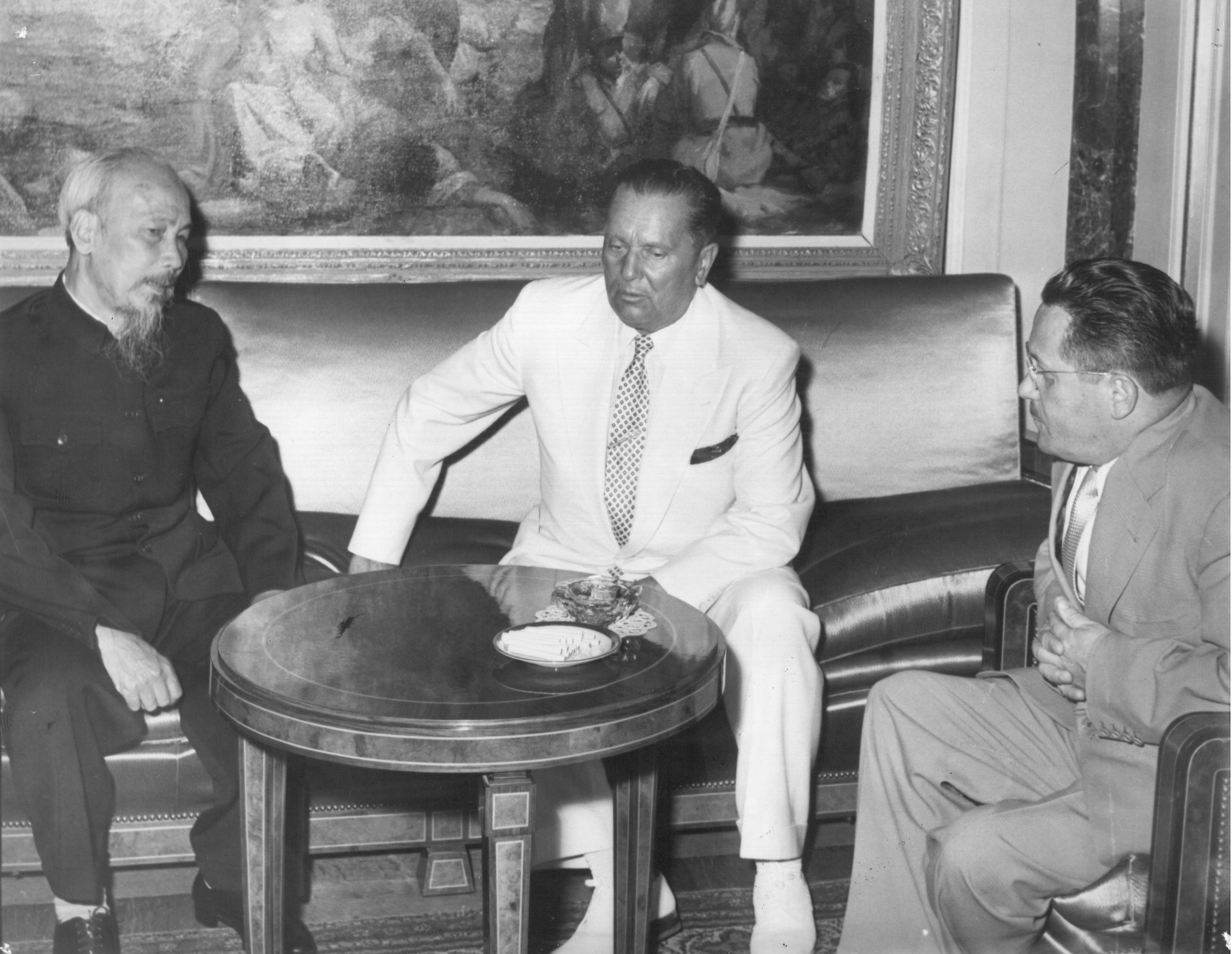
Ho Chi, Minh President of the Democratic Republic of Vietnam and Josip Broz Tito,President of the Socialist Federal Republic of Yugoslavia in Belgrade, 1957. Wikimedia. Photograph by Stevan Kragujević Photograph by Stevan Kragujević
However, independence risked becoming isolation, and Tito needed allies for his fledgling state. Riding the wave of postwar decolonisation in the 1950s, his government turned to the newly independent states of the Global South and positioned Yugoslavia as a founding member, key player and the only European state (excepting Cyprus) in the Non-Aligned Movement (NAM), a global coalition of decolonising and post-colonial states which emerged from the 1955 Afro-Asian Bandung summit.
Non-aligned states sought to assert autonomy vis-a-vis the superpower blocs and to define a ‘third way’, manifested through diplomacy, industry and economics but equally through the arts, culture and soft power, as a way of challenging contemporary cultural imperialism(s).
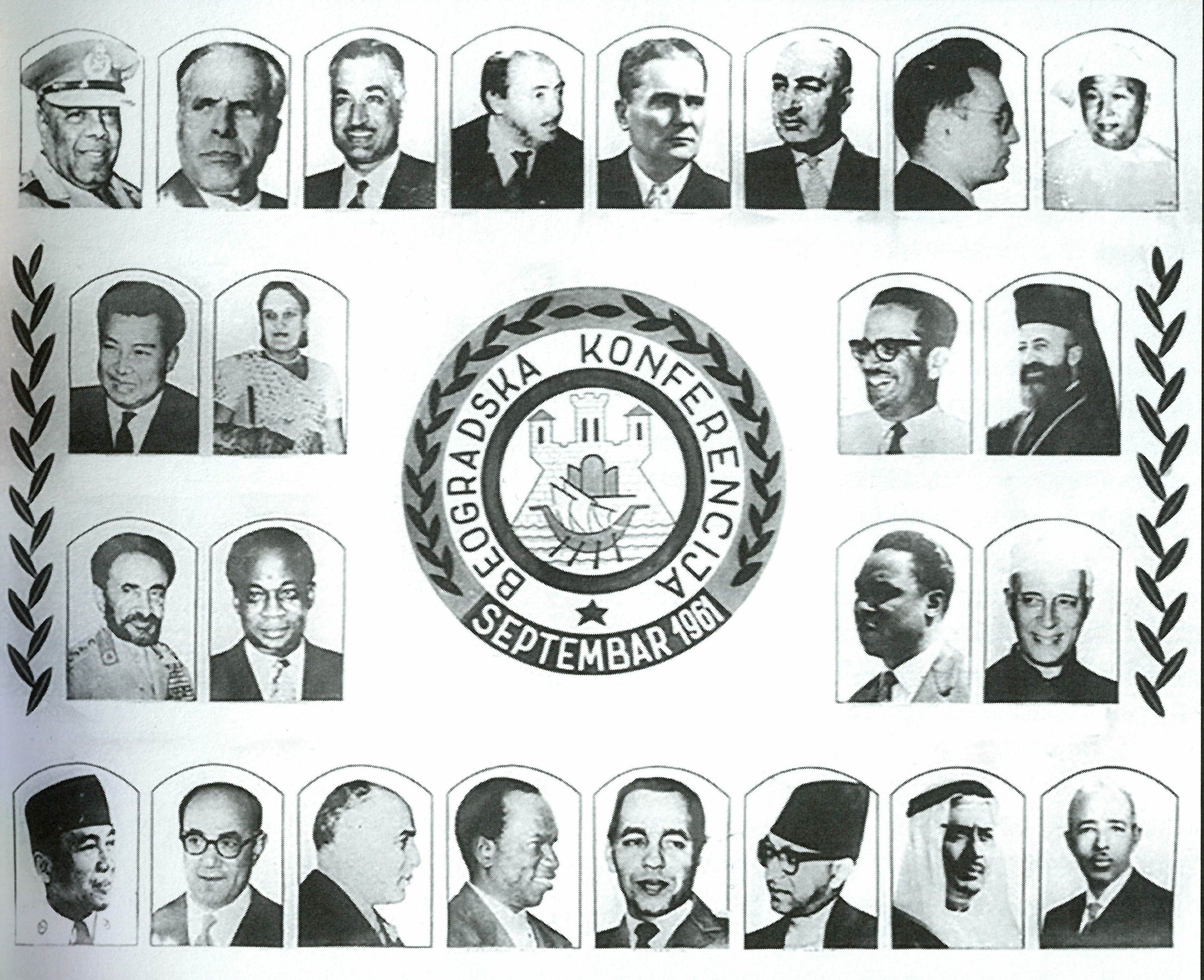
Poster for the first Non-Aligned Movement Conference (Belgrade, 1961), featuring portraits of all delegation heads.
The central text on the above poster reads ‘Belgrade Conference, September 1961,’ above the city’s coat of arms. Illustration from Bogdan Crnobrnja, Kako je stvorenpokretnesvrstanihdnevničkizapisi Bogdana Crnobrnjeiz 1961. godine('How the Non-Aligned Movement was created, the diary entries of Bogdan Crnobrnja from 1961'). (Belgrade, 2016) LF.31.a.6423.
The Non-Aligned Movement’s inaugural 1961 conference, dubbed the Global South’s ‘Yalta’, was hosted by Tito in Belgrade and gathered anti-colonial icons including Egypt’s Gamal Abdal-Nasser, India’s Jawaharlal Nehru, Ethiopian Emperor Haile Selassie, Ghanaian President Kwame Nkrumah, Indonesian President Sukarno and the world’s first female prime minister, Sirimavo Bandaranaike of Sri Lanka. In recognition of their historic significance, the conference archives were recently inscribed on UNESCO’s Memory of the World register.
The movement became a significant global force during the Cold War, manifesting the Global South’s active opposition to the superpower blocs and their imperialist structures and evolving into ‘a living practice’ in its member states, refined through peace-keeping missions, commerce, and transnational artistic, cultural and educational exchanges and activism. The movement arguably enjoyed its heyday in the 1960s and 1970s, although it still exists as a loose coalition of states.
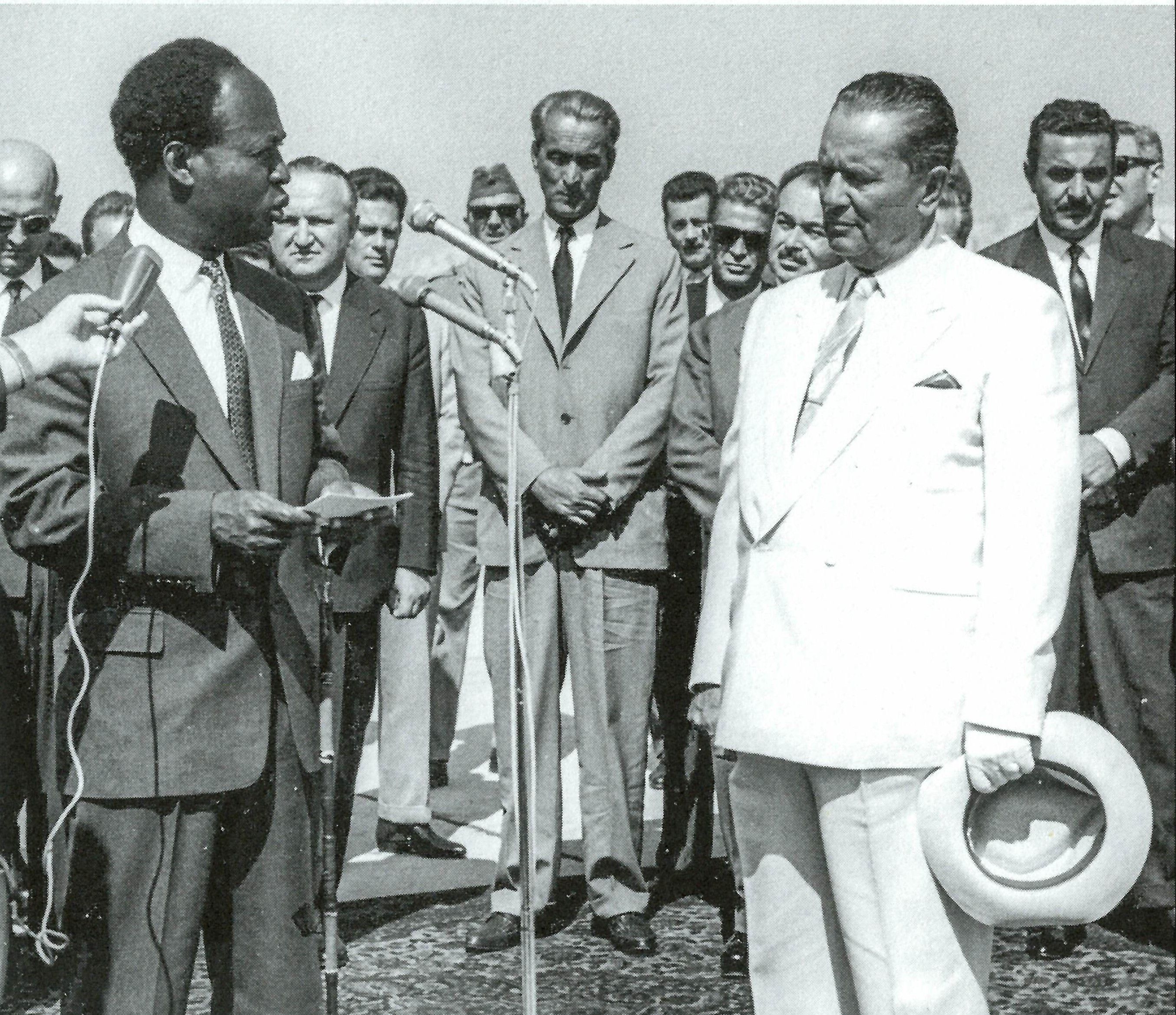
Tito and Kwame Nkrumah at Batajnica Airport, Belgrade in 1961. FromCrnobrnja (2016), LF.31.a.6423.
The British Library is now poised to enrich the conversation around this vital yet under-researched aspect of transnational history through the award of a four-year AHRC Collaborative Doctoral Partnership entitled Cold War Socialism, Non-Alignment and Anti-Colonialism in the Yugoslav Press, 1961-1979.
The project, which will be co-supervised by Milan Grba, Lead Curator Southeast European Collections and Savka Andic, Slavonic Cataloguing, with support from the Library’s digital curators, centres on the Joint Translation Service, a recently digitised and largely unresearched sole archive consisting of a quarter of a million pages of socialist-era Yugoslav press from 1953 to 1989. Created in Belgrade for the use of Yugoslav-based diplomatic and cultural missions, the bulletins provide unique insights into the historical, political, and cultural shifts within socialist Yugoslavia.
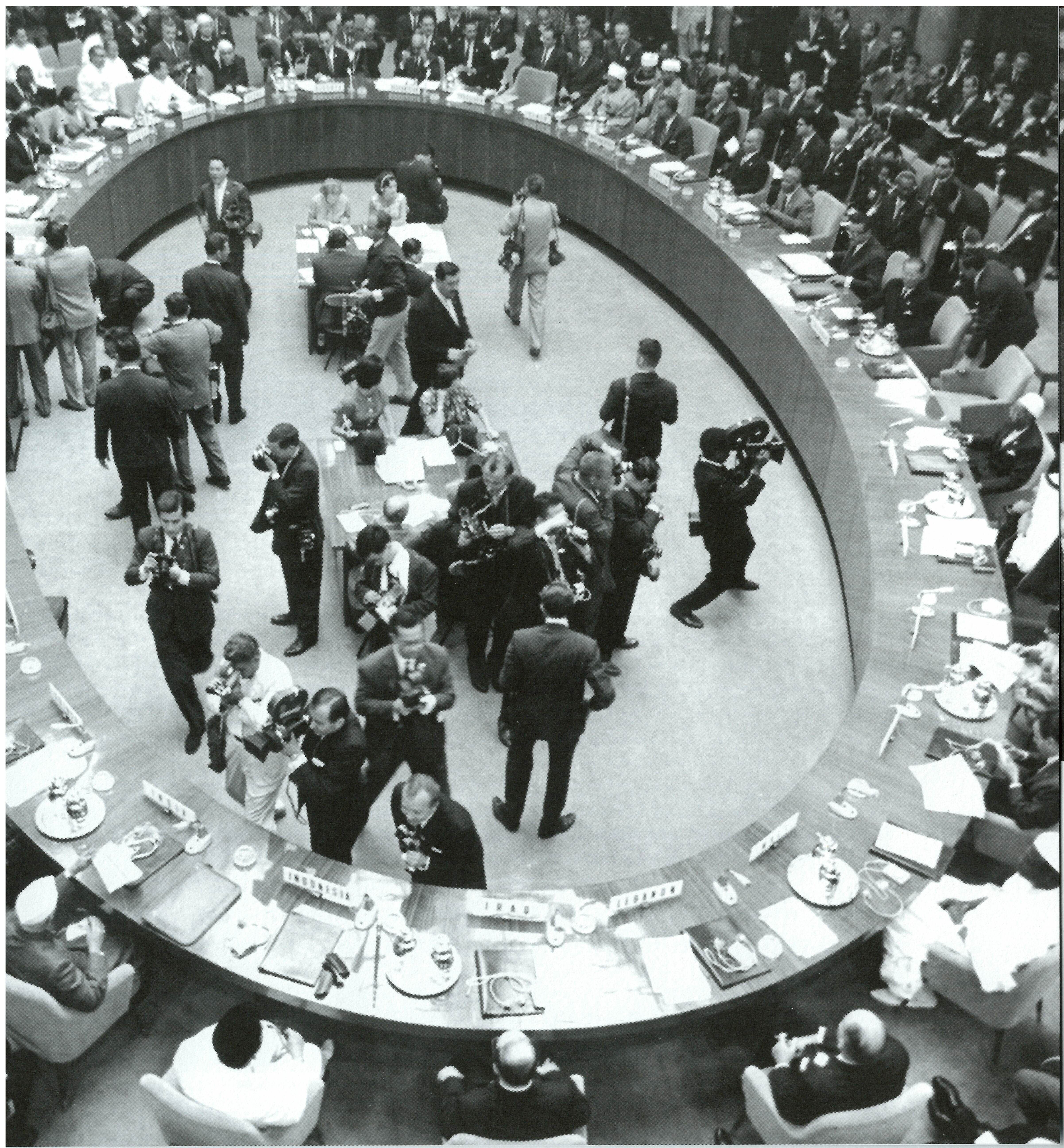
Cameramen and photojournalists gathered in Belgrade on the eve of the first Conference of the Non-Aligned Movement, 1 September 1961. From Crnobrnja (2016), LF.31.a.6423.
A degree of historical amnesia has surrounded Yugoslavia’s role in the Non-Aligned Movement and the Cold War in the years since the global collapse of socialism and of Yugoslavia itself. The focus on this collection, once ‘destined for disposal’, highlights issues of preservation, representation, and inclusion/exclusion in historical scholarship and seeks to reframe and redress ‘orthodox’ Cold War histories focused on East/West bipolarity.
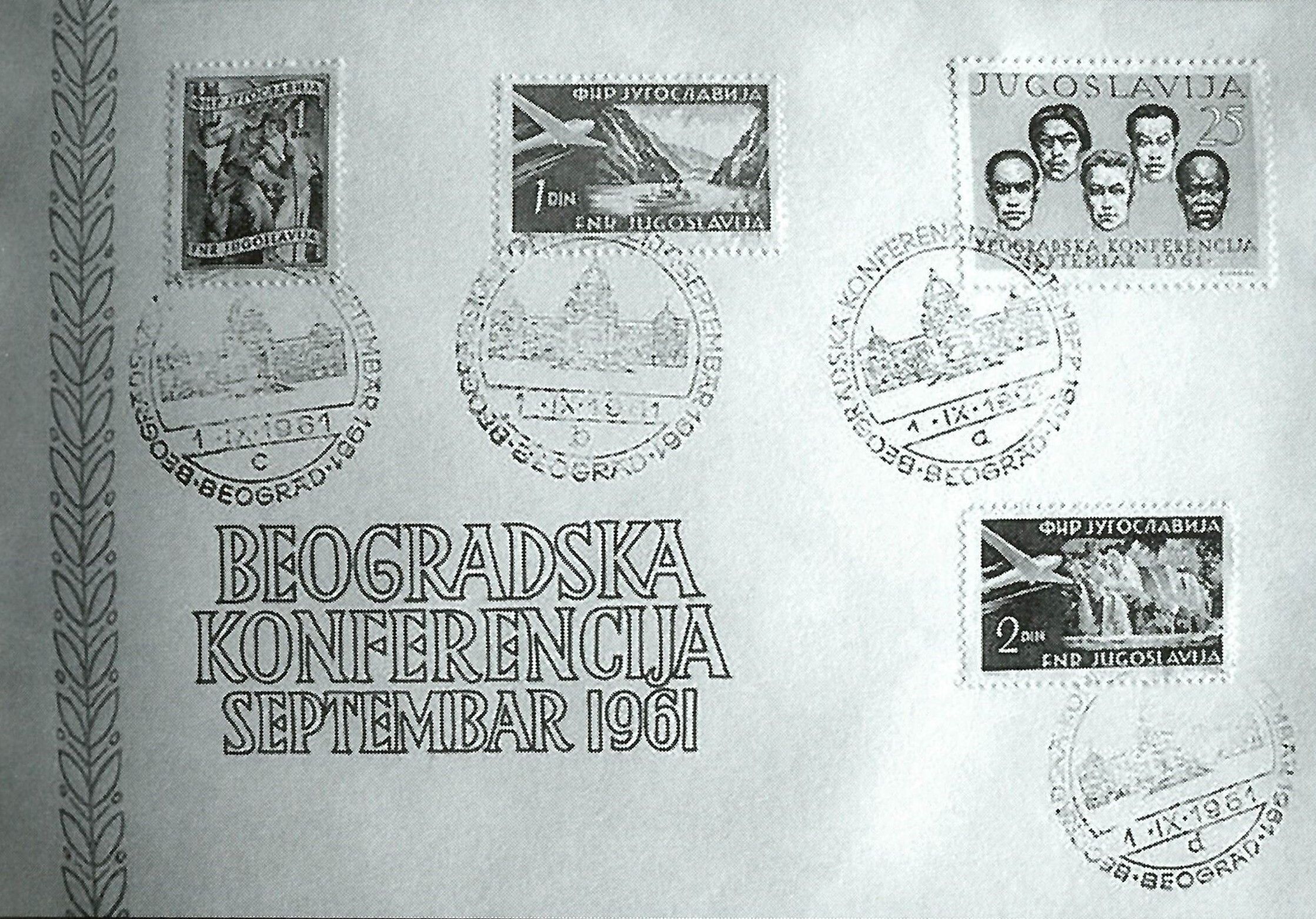
The Yugoslav post office’s set of commemorative stamp, envelope, and postmark (seal) for the first Conference of the Non-Aligned Movement. From Crnobrnja (2016), LF.31.a.6423.
The proposed research seeks to shed light on Yugoslavia's global role during the Cold War, specifically its advocacy of non-alignment, anti-colonialism, and support for newly independent nations and liberation movements, by applying advanced digital methods and interdisciplinary research to the collections, uncovering fresh insights into Cold War socialism and anti-colonialism from a Yugoslav perspective. This aligns with the current resurgence of scholarly interest in the Non-Aligned Movement and its role in shaping Cold War politics.
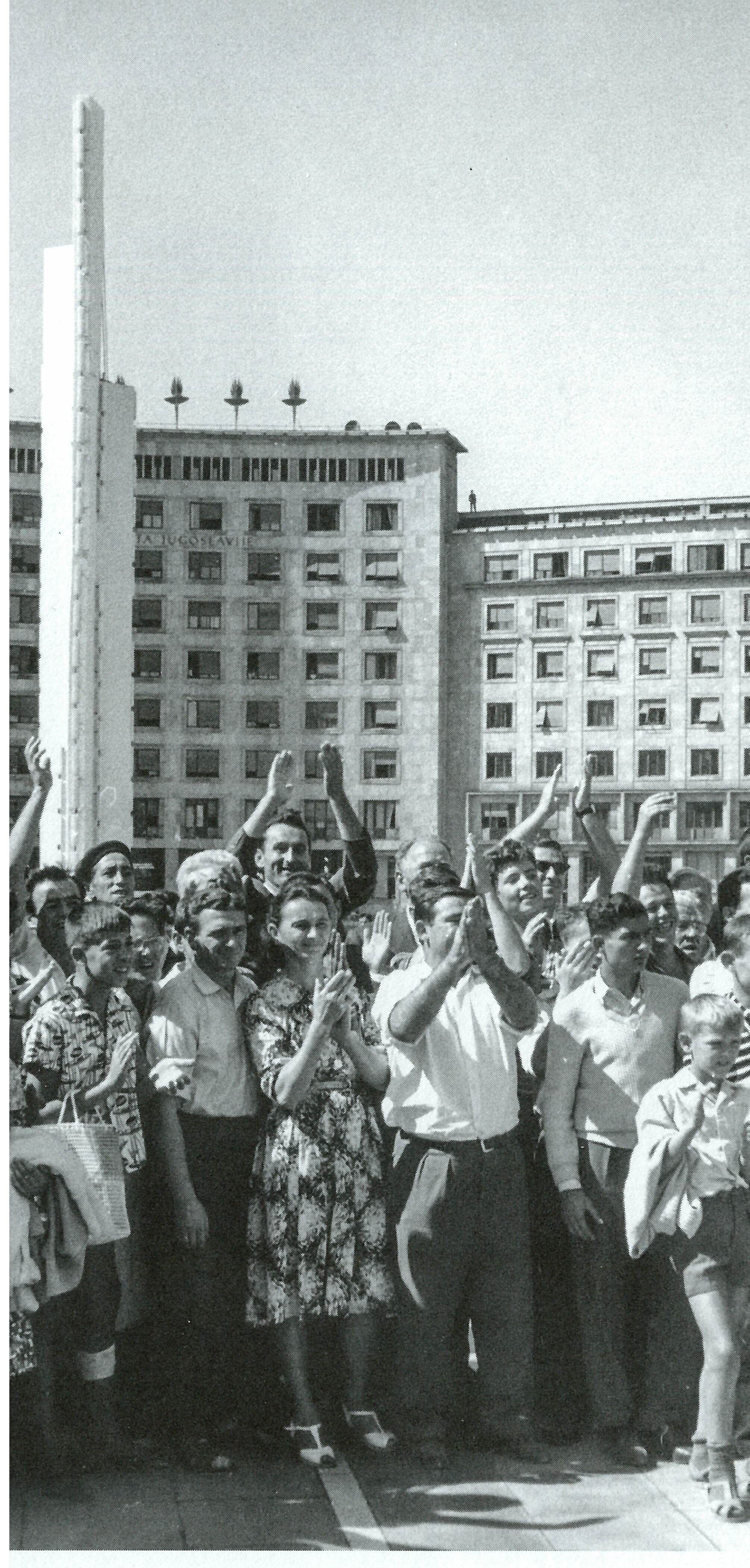
Citizens welcome the participants of the Non-Aligned Movement Conference to Belgrade in 1961. From Crnobrnja (2016),LF.31.a.6423.
As detailed on the project page we would like to invite proposals from academics at UK universities and Higher Education Institutions which engage with one or more of the following research areas and/or approaches to the material: historical and political history, digital humanities, media and discourse analysis, cultural diplomacy and transnationalism, and archival studies and collection histories.
The project also aims to establish a global archive network, fostering connections between the main centres of Non-Aligned Movement archives in Algiers, Belgrade, Cairo, Delhi and Jakarta. It will furthermore allow for the embedding of innovative digital methods within British Library practice, including sentiment analysis, word vector searches and topic modelling.
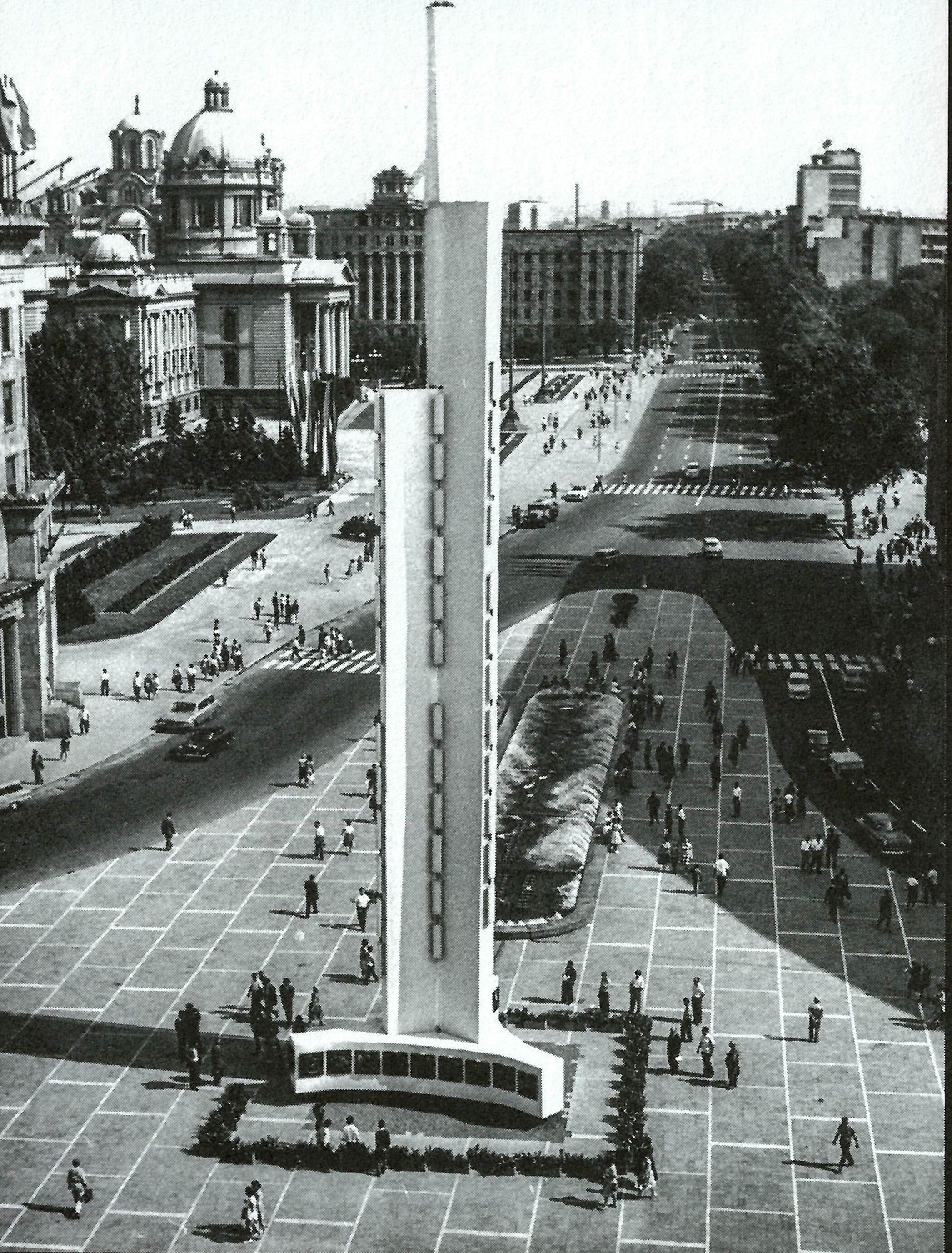
Marx and Engels Square in Belgrade ceremonially decorated for the opening of the first Conference of the Non-Aligned Movement. From Crnobrnja (2016), LF.31.a.6423.
For further information please contact British Library Research Development Office – Postgraduate at pgr@bl.uk and Milan Grba, Lead Curator Southeast European Collections, European Collections, Western Heritage at milan.grba@bl.uk.

This blog is part of our European Studies blog series, promoting the work of our curators, recent acquisitions, digitisation projects, and collaborative projects outside the Library.
Our blogs explore the British Library's extraordinarily diverse collections of material from all over the continent – from Greece to Finland and from France to Georgia, and everywhere in between.

You can access millions of collection items for free. Including books, newspapers, maps, sound recordings, photographs, patents and stamps.